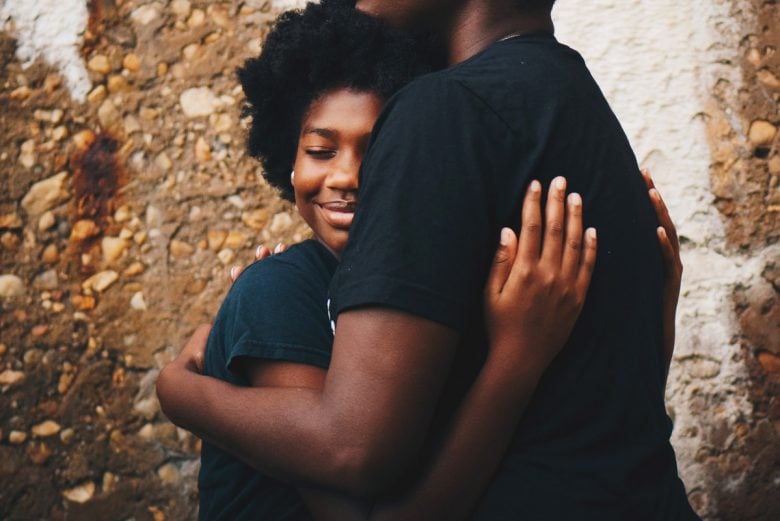
Helping children see the good starts with simple steps.
It’s tiring, isn’t it? Your child’s world is full of so much good—but they seem to find the worst. You want to help your child stop being so negative, but how?
If you find yourself telling your child to focus on the positive, stop right there. You might be missing a step that makes your advice difficult to take. Carol and Anne share tips in this episode to help your child create true optimism.
This week’s Parenting Practice
This week, instead of correcting your child’s negative responses, coach them with these three steps. 1. Find out more by asking: Why don’t you like that? 2. Ask: what do you want instead? 3. Put your focus on that together.
Transcript of podcast episode
Carol: Sort of forced happiness though.
Anne: Right.
Carol: You will be happy.
Anne: Yes, exactly.
Carol: You will like the pool. Yes, you will enjoy grandma’s, and they’re probably going, “No, I won’t.”
Carol: Welcome to the Child Whisperer podcast. I’m your host, Carol Tuttle, author of the best-selling parenting book, “The Child Whisperer.” I’m with my co-host, Ann Tuttle Brown.
Anne: I have a Type 2 six-year old son. I would like tips on how to get him to stop being so negative. In almost every scenario, my son is ready to believe the worst. Every comment, even silly comments from his type one younger sister, are cause for his feelings to become hurt. In turn, my type one daughter will get louder to try and lighten things up. This just makes things worse. How do I help him choose to see the good in the world around him?
Carol: I love this question, because we’re in a world where it’s easy to get focused on what’s not working, what’s wrong, what to feel bad about. You know, it’s just a constant stream of our most popular media news is, what’s there to feel good about? And so, a parent, I think, needs to look at where are they learning this? Why have they become focused on that which is sort of the downer side of life?
Anne: To kind of take it as a clue?
Carol: Yeah. Well, I’d be curious, okay, how am I talking? And what am I saying? What’s my response to things? Are they learning this from me? You have to consider is a six-year old child, they’re not very old. A lot of this is parental modeling, in cases that you aren’t aware of your own habit.
Anne: Or maybe even certain shows they’re watching.
Carol: Yeah.
Anne: Or maybe friends they’re around. I mean, those are all things to consider. Yeah, I think also a clue to a larger stress are these negative comments just kind of surface level things, and it really is there something more…?
Carol: Deeper going on…
Anne: Yeah, deeper going on.
Carol: …that’s unsettling to them? So again, yeah. What do you model for your children, clue to a larger stress in their life. And this is the one tip I love in this segment, is how are you handling this, because there’s most often, a parent will say what if their child is pessimistic.
Anne: Stop being so negative.
Carol: Yeah, they’ll correct them. Stop being so negative. Now, think about that. Okay, well, what do I replace that with? You’re telling me to stop something, but there’s not any offering of what to do instead.
Anne: And there’s no validation either. Like those are my feelings.
Carol: No, it’s dismissive, it’s dismissive, and there’s no tool, no guide, no coaching of let’s approach it this way. We’re dealing with, again, a behavior modification strategy that just by telling one to stop something doesn’t give them any support for creating something else.
Anne: Something I see a lot too is when a child says something negative like, let’s just take for example, I don’t want to go to grandma’s. Yes, you do, you love Grandma. You counter it. Like, I see this time and time again where like there’s no validation given to any of those feelings. And it’s like, okay, like, why is the parent saying that way? So because maybe they know from past experience, once they get to Grandma’s, they know everything’s fine and they warm up. Yeah. Or two, like fear of actually thinking, “My child doesn’t want to go see their grandma,” and they don’t wanna face those feelings as the parent, but I see this all the time. Like, I don’t wanna get in the pool and I don’t wanna go swimming lessons. No, you’re gonna be fine. It’ll be fun. Like, what does the child do with that? You know, and so, validate, validate, validate. I have seen this and I learned about this, and I was…you don’t realize you’re doing it. And…
Carol: You want your child to switch gears.
Anne: As a parent, you are a fixer, you know, like you want your kids to be happy. You don’t want it to be sad and scared. You want him to be happy and at peace. And so you want to fix the problem naturally. I think that’s a good…
Carol: Sort of forced happiness though.
Anne: Right.
Carol: You will be happy.
Anne: Yes, exactly.
Carol: You will like the pool. Yes, you will enjoy grandma’s and they’re probably going, “No, I won’t. It’s not what I want.”
Anne: Yeah. And so I’ve practiced this with my own daughter many times, and being able to, like, if she has feelings, and in my mind I’m thinking like, those aren’t even founded. Like, you’re going to be fine. If I validate her feelings, it takes care of itself. So validate.
Carol: Rather than say, “Stop being so negative,” or, “Yes, you will, this is what you’re going to be experiencing,” the first thing to ask is why don’t you like that or tell me why you feel that way. Be really interested in learning. It’d be interesting to know why the six-year old…be curious to learn more rather than just wanting to fix it right away and correct it.
Anne: This phrase is a really handy one in your parenting toolbox. Tell me more? Tell me why? And you just listen.
Carol: If they’re saying…complaining about getting in the pool or they’re being negative about something that you’re going to grandma’s, “Why don’t you wanna do that?” Then let them answer. Second, I would then say, “Well, what do you want instead? What do you want instead?” Let’s see. I’d be curious to know what they come up with. If you don’t want this, what do you want? It’s not you’re not agreeing to it. You’re not saying yes to anything, you’re investigating. You’re allowing, you’re wanting to get more information. And these statements in and of themselves are so validating. When we’re validated for how we feel, how much more agreeable to we become? Even as adults, it’s the case.
Anne: If you say, “No, you’re gonna be fine,” I think the child just gets more defensive about where they’re in their feelings and say, “No, I’m not fine, this is how I feel,” but if you validate, they’re like, “Huh,” and then just kind of like the walls are down, and it’s like more peaceable. And so…
Carol: They might be saying, “I don’t wanna go to Grandma’s,” because maybe it’s a Type 4 child and they don’t wanna feel forced to kiss their grandma every time. There’s something going on that you wanna get to, and then be able to support them with. Okay, well, what do you want instead? And the third step in this process is, okay, let’s talk about that and focus on creating that. And with reasonable, you know, coming to kind of the middle ground that maybe what they want, you know, isn’t reasonable or they don’t understand the bigger picture.
Anne: You can even rephrase that last question. If you were to say, what do you want? What do you want instead? Well, I don’t want to go to Grandma’s. Well, we’re going to Grandma’s, what do you want to experience at Grandma’s? What would make it a really great experience at Grandma’s that I got to do this or that? Okay, well, let’s focus on that. And so rather than just washing it aside, I’m not going to talk about your feelings, you’re creating something, and this is what you teach. And all that you do is focusing on what you want to create. And I think that’s such a good tool to teach a child because then as these feelings come up for them, they can remember to respond to themselves this way, they can have self-validation, they can focus on what they want.
Carol: My new book, “Mastering Affluence,” is the parent’s manual, to learn how to do this for yourself that you then easily bring into your parenting experience, because when you’re doing it internally with your own mind, it’s really easy to then support a child in learning to think this way, how to manage and navigate their experience with, well, if I focus on what I don’t want, I’m going to create more of that. And so, I do wanna feel validated for what I’m feeling because I’m uncomfortable about something, and then I can focus on what I want. And the thing that I think is interesting is this probably, in a lot of ways for a six-year old, become a habit, it gets them attention. If you’re correcting a lot, that’s still attention. You’re giving attention to a child in a negative way. Children will take that over nothing any day.
Anne: I think, too, if you’re getting like an opposite response, if this strategy isn’t working out and the child is still in that negative, you can, you know, just say, “Well, I’m going to choose to focus on this, and I’m going to move forward. And you’re welcome to join me or not,” yourself, to give the kid the option if they’re still throwing a fit, and they don’t like the way you respond. But I think just continue to make that your response and they’ll say, “Oh, okay, this is the new way of doing things.” Be consistent in this approach. I have a story of when I use this with my six-year old just recently, she was feeling nervous about going back to school. And I was just saying, “Oh, it’ll be fine. You get to see your friends again, or this or that.” I just said, “Tell me more, why don’t you like that?” And she shared that she was just feeling nervous about being back in the schedule all day or being with friends again, seeing people she hadn’t seen in a long time and gave me an opportunity to notice what was going on for and I said, “Well, what do you want instead?” “I wanna have fun, I wanna be excited.” And so I said, “Okay, let’s focus on that.” It was a really easy switch. It was a one minute conversation, but it was able for…and she got this big smile on her face and was like, “Okay, cool. We can do that.”
Even did it with my two-year old. He was… How many parents do this where your kid is crying and you’re just like, “I don’t even wanna like figure this out?” And so, he was just crying for like five minutes straight. I just was like moving through the motions, getting him his pajamas. And I finally was like, “What is wrong, Sam? How can we make this better?” And he told me like, “I wanna watch a show,” because his sister was downstairs watching his show. And so, I finally talked to him about it, and I was like, “Oh, that’s what’s going on.” Let him put voice to it. And I just said, “Well, you’re going to bed now, you can watch one in the morning.” And it was just that’s kind of a smaller example of this used but I just…communication, communication, communication, and then validation. So I was able to see, okay, I’m validating you’re feeling sad. Tell me why. Okay, here’s what we can do to make it better.
Carol: And that’s how you turn a pessimistic child into an optimistic child, by what you just said. Because once someone is heard and validated, and you’ve received and given them empathy, which does not… It takes more time ongoing in the bigger scheme of things to keep correcting. It takes more energy, it creates more frustration. And so you’ll actually apply less effort to this as it becomes a common communication style in your parent-child communication. It really takes away a ton of stress to be able to communicate like this.
Anne: Yeah, you wanna be a coach, as a parent, not a correction officer.
Carol: That’s right, you’re coaching your child and you’re coaching yourself at the same time, which I think it’s supportive energy for the whole family. You choose to be proactive about your life rather than feel powerless to it, and you feel more optimistic when you feel you have choices and you’re proactive with opportunity. You feel pessimistic when you feel powerless and you’re a victim of the world. And children, in a way, are…you know, they easily can feel like they’re victimized and powerless when you say things like, “No, you don’t, you don’t feel that way,” or, “It’s gonna be okay. Like, get over it,” because it’s like, “I have no rights here.” So you really wanna give your children that opportunity to express themselves.
Anne: And don’t be surprised when they come right back at you with this response and say, “Mom, what do you want instead?”
Carol: What do you want instead? That’s awesome. You know you’re really, really succeeding as a parent when your child start using the same strategies with you, which happened in my world. It was fabulous. You feel a little like…when they do it, but then you’re going, “This is working, look, it’s sticking. They’re giving me this coaching. They’re coaching me, this is fabulous.”
Anne: How to create optimistic family. So your parenting practice for this week is instead of correcting, coach with these three steps. Number one, respond, why don’t you like that? Number two, ask the child, what do you want instead? And then number three, let’s put our focus on that.
Carol: Pretty easy. I think it’d be fun for parents to apply this. So I guarantee you’ll have an opportunity this week. I see you succeeding. Thanks for listening. For more support, go to thechildwhisperer.com where you can purchase the book, subscribe to our weekly parenting practice email, and find a transcription and audio of the Child Whisperer podcast.
Anne: If you’re listening on iTunes, thank you for leaving a review. If you have a parenting question, please send it to [email protected].



